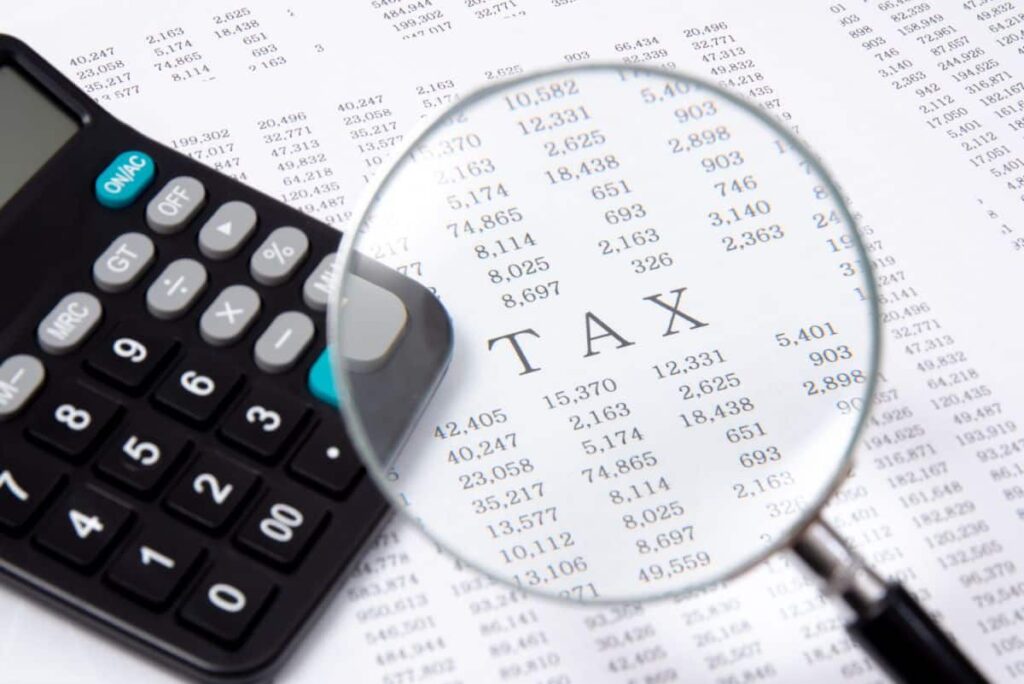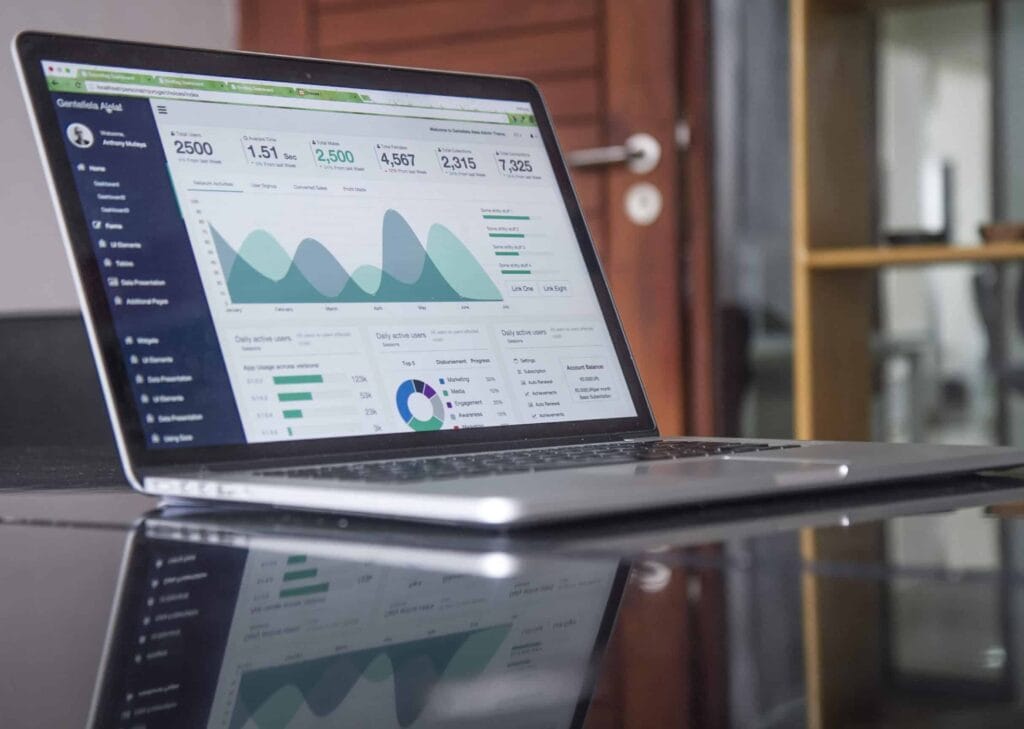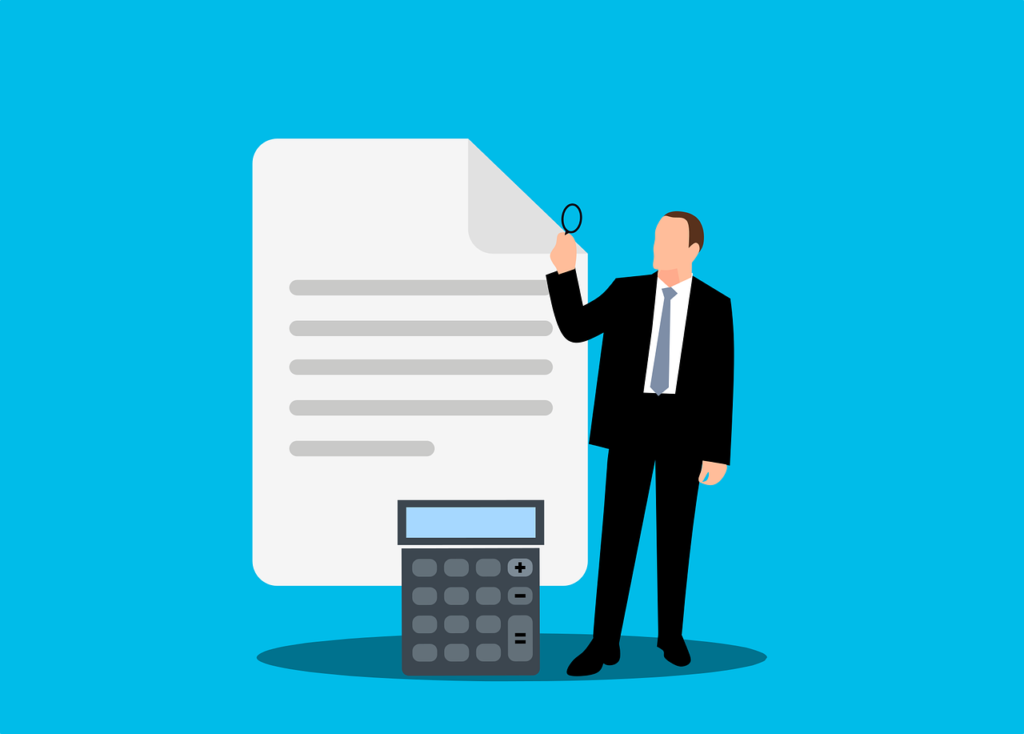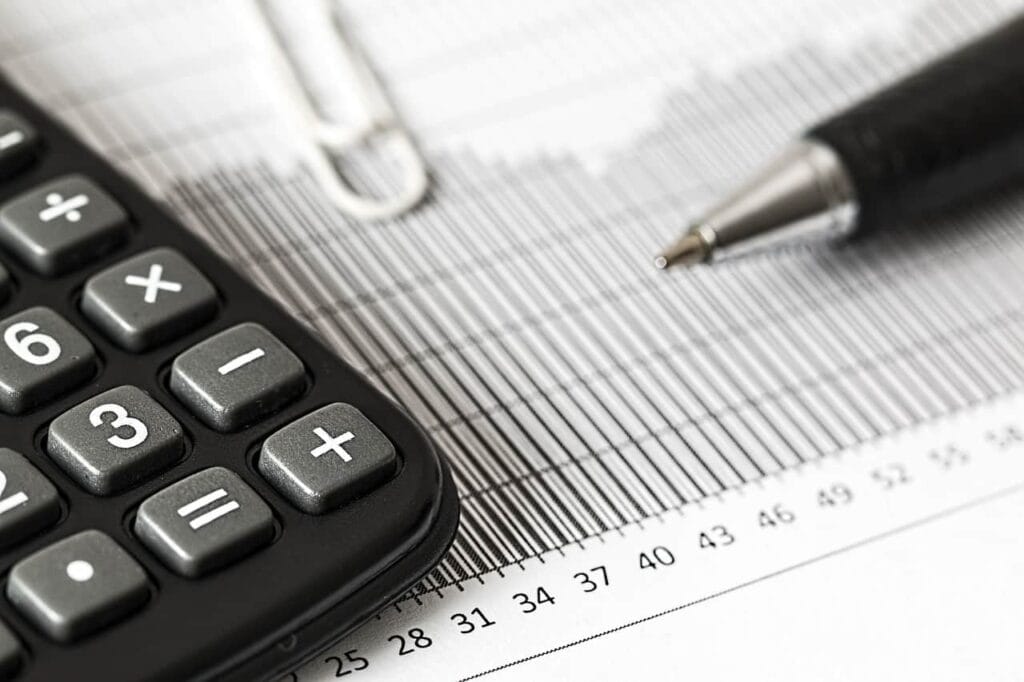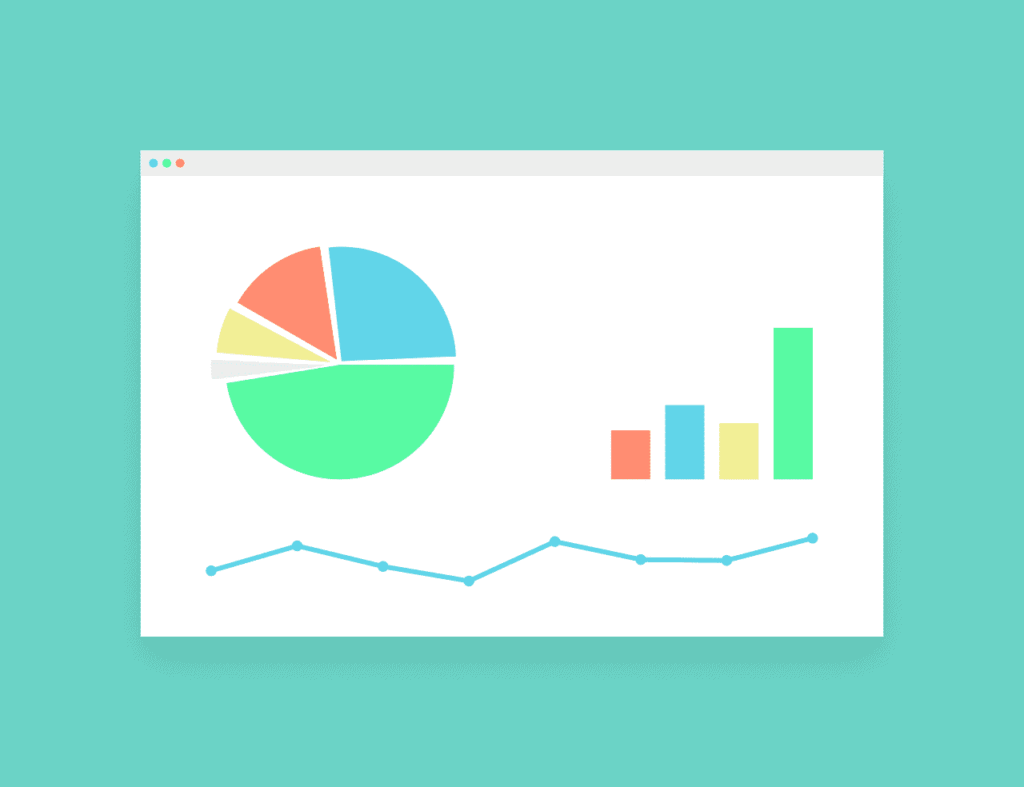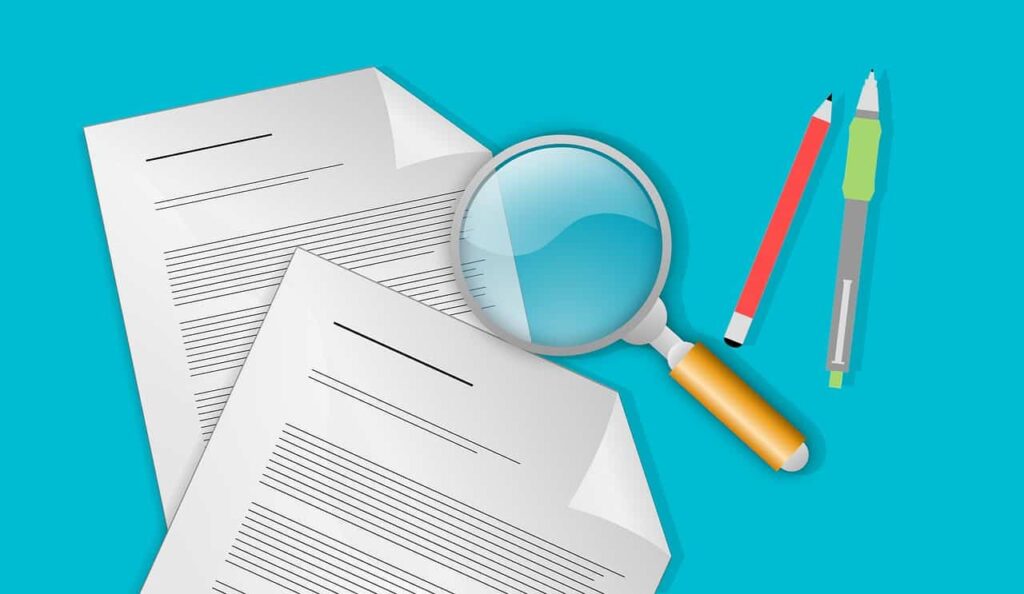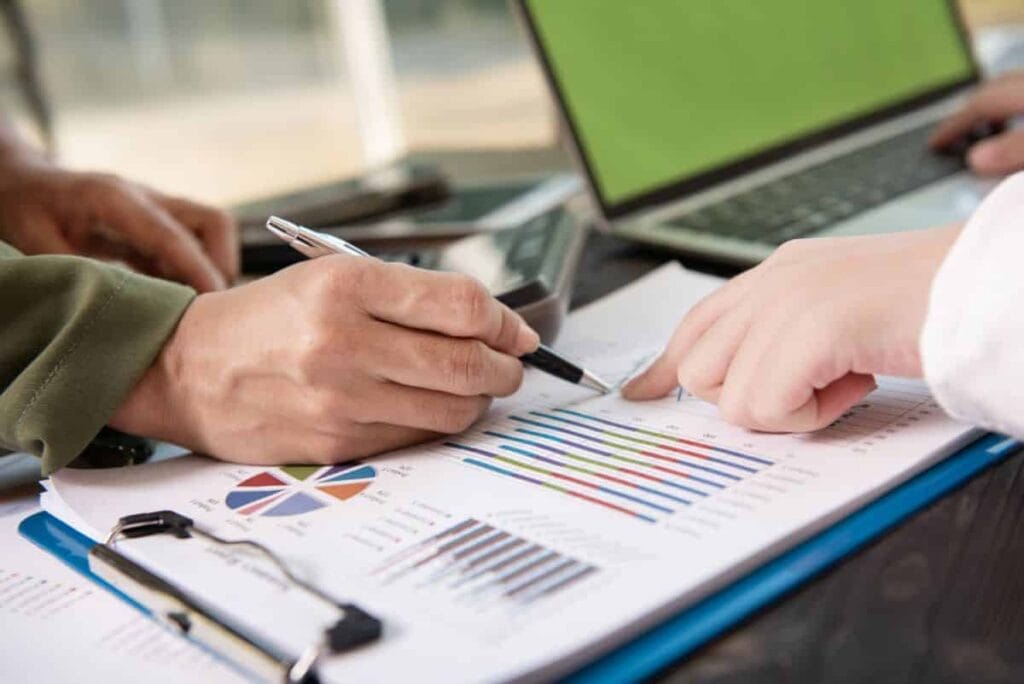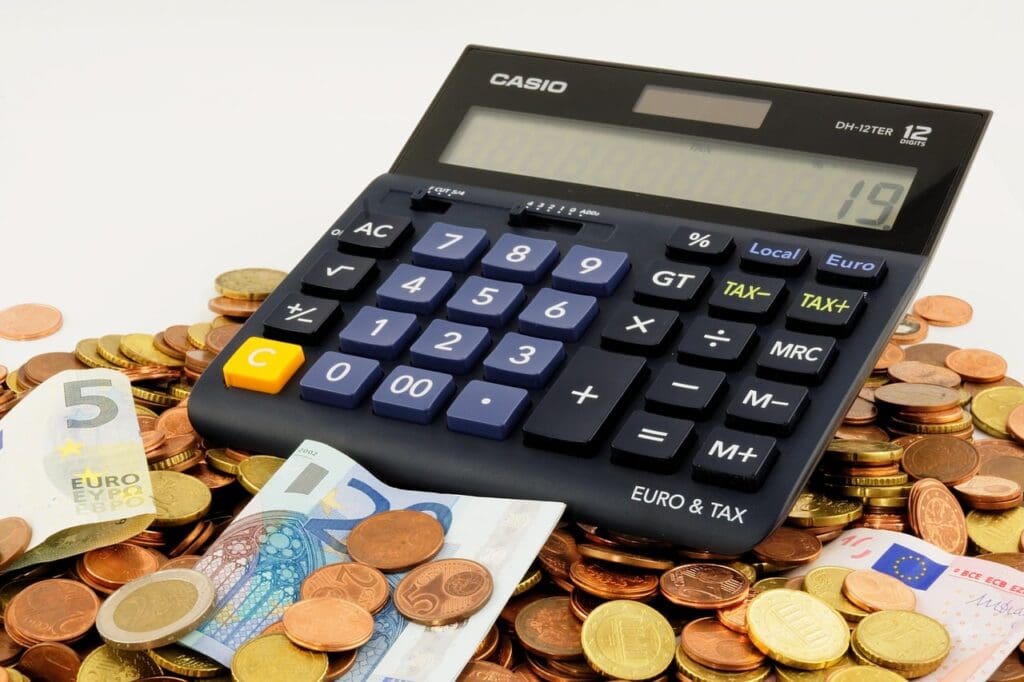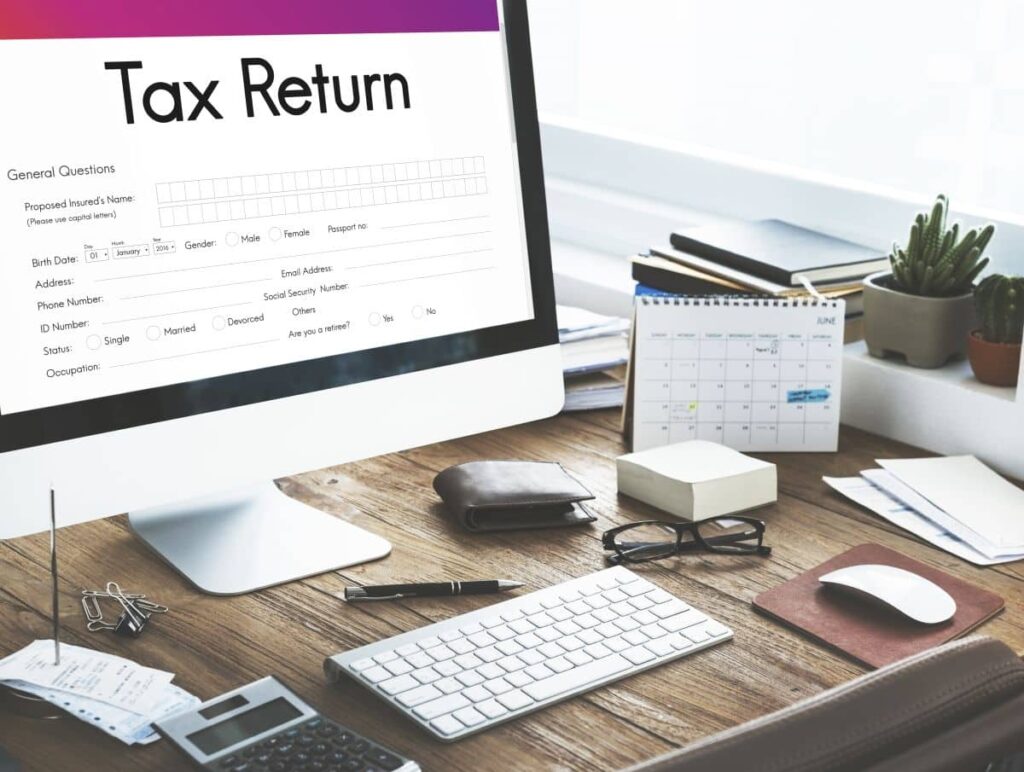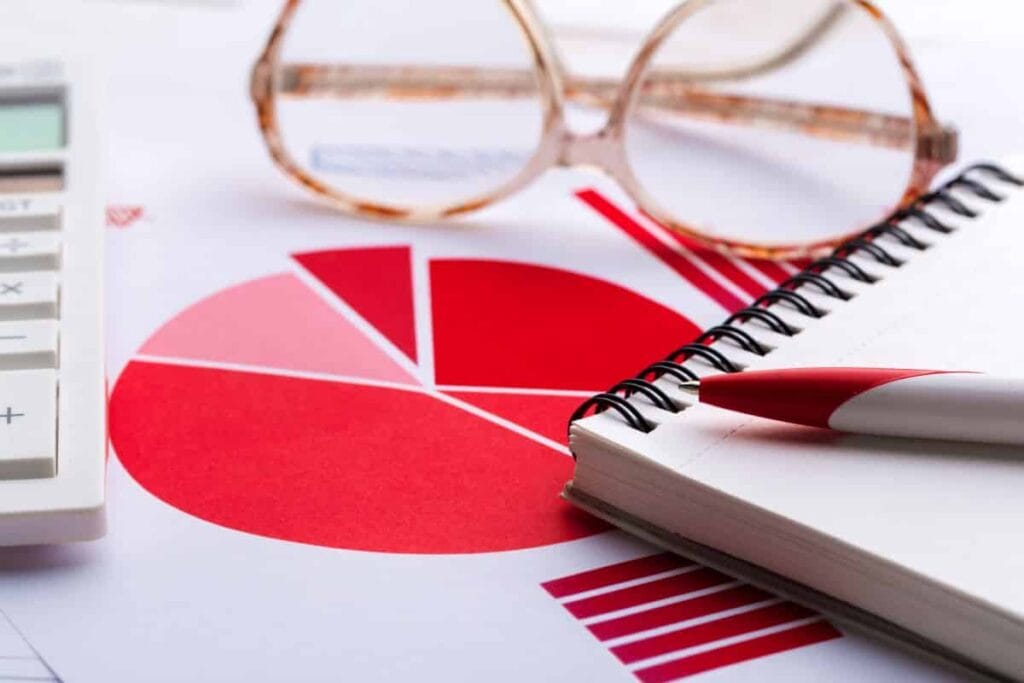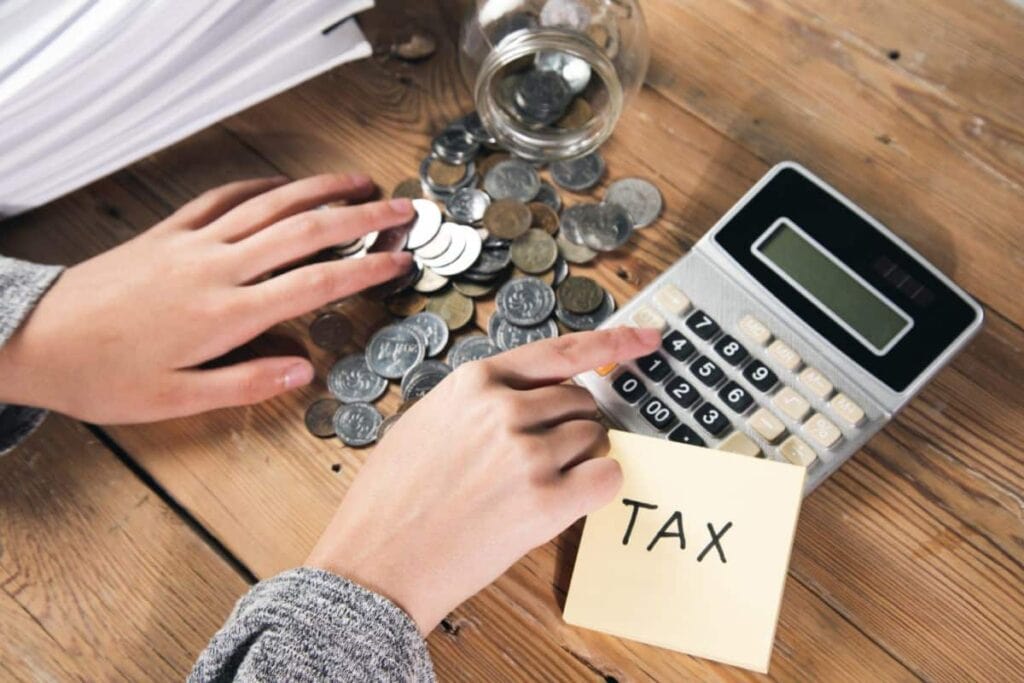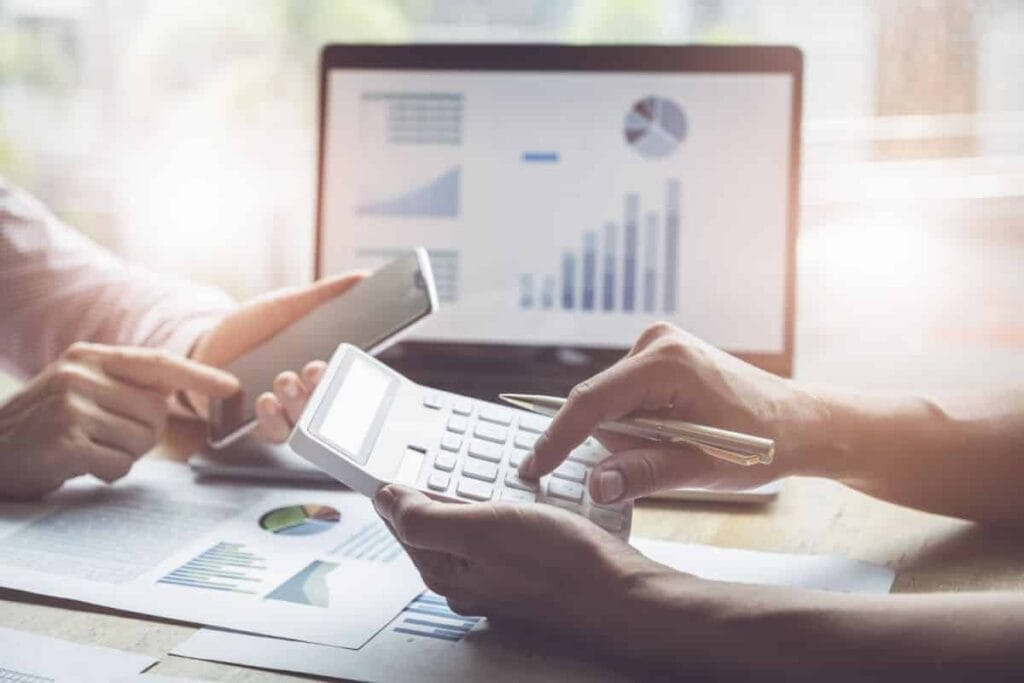What are your yearly tax obligations? Do you know how to properly file your income taxes? If not, don’t stress, we’ve put up a list of helpful tax hints to assist you to get through the process.
This blog post will provide you with all of the information you need to file your taxes. We’ll go through what paperwork are required and where they should be sent, as well as what deductions can be made and how much money should be deducted from paychecks. Continue reading to learn more!
Instead of the typical fireworks, a collective sigh of relief accompanied the cheers, party poppers, and champagne clinks on New Year’s Eve, with the realization that the fabled 2020 had finally drawn to a conclusion. Finally, with the days of lockdown, constant sanitisation, and frantic toilet paper purchases behind us, we can all focus on the important things in life: vacations, socialization, elective surgery, and, of course, tax.
2021 will lead a dream team of new and familiar tax players to realize those New Year’s objectives to become more tax-savvy. With personal contributions more available and attractive than ever, super contribution benefits are the top draft pick, COVID concessions and grants continue to pulse the 2020 hangover, and we also provide a cautionary tidbit of advice on substantiation. So keep reading to prepare yourself with the foolproof tax arsenal for 2021.
- Personal superannuation contributions threshold.
- Downsizer superannuation contributions
- COVID-19 working-from-home personal tax deduction rate extension
- Small business immediate asset write-off threshold
- Non-assessable non-exempt Victorian government grant income
- Substantiation and logbooks
Personal superannuation contributions threshold
While it’s common knowledge that individuals can make a deductible concessional contribution up to the deemed cap ($25,000 for the 2018 financial year onwards), we’d like to shed some much-needed light on the fact that individuals can carry forward unused cap amounts from up to five previous financial years (starting with the 2019 financial year) – subject to their superannuation balance being $500,000 before the start of the financial year.
This translates to a best-case scenario deduction of $75,000 for 2021 tax returns – a significant tax penalty for contributing money to your super fund that you will be able to access anyway (eventually).
This will benefit irregular income earners in particular, as they will be able to “catch up” on their superannuation payments if they have the financial means to do so — for example, persons who have received money from a sale and experienced a taxable capital gain.
| Financial year | Concessional cap | Maximum deduction with no concessional cap used in the previous year |
| 2019 | $25,000 | $25,000 |
| 2020 | $25,000 | $50,000 |
| 2021 | $25,000 | $75,000 |
| 2022 | $25,000 | $100,000 |
Consider it a particularly long-term term deposit, with a rate of return equal to your marginal tax rate (if you can stand to wait a few years to access the principal).
If you don’t want to wait, you can utilize this tax tip at any time throughout the next few years – regardless, you’ll only have the previous five financial years’ worth of unused cap accessible to you. In any scenario, many of the major superfunds require a suffocating three or four weeks’ notice if you want your contribution in and processed by the 30 June 2021 deadline – so if not this year, next year.
Before you start daydreaming about how you’re going to spend all that wonderful tax refund money, keep in mind that employer contributions, as well as personal payments, eat away at your concessional cap (whether it’s the statutory 9.5 % SGC or otherwise).
Downsizer superannuation contributions
If you are 65 or older and meet the eligibility requirements* (see below for an excerpt from the ATO website), you can donate up to $300,000 to your super fund without depleting your contributions cap or superannuation balance (even if your total super balance is larger than $1.6 million).
If you haven’t had the chance (or if you’ve just been devoted to travelling Europe), it’s a fantastic time to top up your super, and there’s no need to buy a new home if you’re planning on moving into your firstborn’s granny apartment for some well-deserved pay-back free rent.
There are a few crucial considerations to make:
- Your transfer balance cap will be affected
- The downsizer contribution is only available once
- The donations are not tax-deductible
The non-ownership spouse could likewise make a downsizer payment if one spouse only owned the sold home (provided the other eligibility criteria are met). Everything is fair in love and in real estate!
To discover more about the carried forward personal superannuation contributions threshold and the downsizer superannuation contributions plan, contact your Tax Warehouse superannuation expert today.
COVID-19 working-from-home personal tax deduction rate extension
In April 2020 the ATO announced a temporary 80c per hour worked from home tax deduction from 1 March 2020 to 30 June 2020, requiring minimal verification.
This method has been extended until June 30, 2021, and workers should keep track of their hours worked from home (through timesheets, rosters, diaries, or similar). Hot tip: Because the shortcut approach covers all qualifying home office charges, you won’t be able to claim regular expenses like a cell phone or internet bills at the same time.
Assume you believe the hourly rate of 80c does not correctly reflect the costs of your home office. In that situation, you can continue to claim 52c per hour while also claiming other applicable home office expenditures — be assured, that your trusted advisor will look into all alternatives to maximize your deduction.
Another disadvantage is that, despite the fact that many people need caffeine as much as they need a computer, the ATO has ruled that coffee, tea, and snacks consumed while working from home are not deductible as office costs. So bye-bye, $5 spent on a cup of coffee down the street.
Small business immediate asset write-off threshold
If you read the riveting Morrows Federal Budget blog, you might remember the Budget’s crown jewel – the unlimited asset write-off threshold. Up to 30 June 2022, businesses with an aggregated turnover of up to $5 billion can claim an immediate deduction for the value of:
- New depreciating assets;
- The cost of making changes to existing assets that are eligible;
- Small and medium-sized firms (annual revenue less than $50 million) are eligible. – pre-owned assets
By June 30, 2022, assets must be deployed and operational – plenty of time to window shop. A high-cost asset purchase could tip your corporation into loss area, which could then be carried back to prior year profits – meaning a return of tax already paid – in addition to a tax deduction.
Before you head to the Lamborghini dealerships, keep in mind that the luxury automobile limit for the 2021 fiscal year remains at $59,136, which means that only the business component of this sum may be deducted in the year of purchase.
NANE Victorian government grant income
As if grant income isn’t delightful enough in its own right, the government has announced that grants from the Business Resilience Package are non-assessable, non-exempt (NANE) income – meaning businesses don’t have to pay tax on it.
Grant payments that are not explicitly declared NANE by the government will continue to be taxable income, and NANE status will be decided on an application by application basis (currently restricted to grant programs announced post-13 September 2020).
While the tangible benefits may still be unclear, this measure takes an important step to ensure that the full amount of these COVID-inspired grants remain in the hands of businesses in need, rather than requiring them to serve the Tax Office up a generous slice of the pie months later.
Substantiation and logbooks
Before you press snooze on the word substantiation, take this warning: the ATO will be more severe than ever, ensuring their money have gone to the correct pockets, in light of an expensive year for the government and partly trust-based cash flow boosts, grants, and JobKeeper payments. So be ready to defend your grant and JobKeeper applications, since that knock on the door could come at any time in the coming years.
Individuals should also tread lightly with work-related expense deductions and check that logbooks are up to date were using this method to claim work-related car expenses. Logbooks are valid for five years, and receipts, loan documents and tax invoices should also be kept for five years.
Contact your tax and business expert to learn how to not only keep up with, but also benefit from, those revisions and COVID-19 concessions.
Eligibility for the downsizer measure
If you can answer yes to all of the following questions, you will be qualified to make a downsizer payment to super.
- When you make a downsizer contribution, you must be 65 years old or older (there is no maximum age limit)
- the amount you are giving comes from the proceeds of the sale of your home, which occurred on or after July 1, 2018
- you or your spouse owned your home for ten years or more before the sale – the ownership period is generally calculated from the date of settlement of purchase to the date of settlement of the sale
- your home is in Australia and is not a caravan, houseboat or other mobile homes
- the proceeds (capital gain or loss) from the sale of the home are either exempt or partially exempt from capital gains tax (CGT) under the main residence exemption or would be entitled to such an exemption if the home was a CGT rather than a pre-CGT (acquired before 20 September 1985) asset
- either before or at the time of making your downsizer payment, you have furnished your super fund with the Downsizer contribution into a super form
- you must make your downsizer payment within 90 days of receiving the selling profits, which is normally at settlement
- you have not previously made a downsizer contribution to your super from the sale of another home.
Tax tips for employees and contractors

Lodge on time
If you’re filing a tax return, you must do so by November 1, 2021. This can be done through myTax via myGov or a paper return.
If you hire a registered tax agent, they will usually have unique filing deadlines and submit returns for clients after November 1, 2021. To take advantage of late delivery dates, you’ll need to register on their client list by October 31.
The ATO will pre-fill a lot of information in your tax return. So, before filing, wait until all of the data is finalized. This is normally finished by the end of July, but it can take up until the middle of August.
Before filing your return, double-check that your employer’s end-of-year income statement indicates ‘tax ready,’ and that you have your private health insurance, dividend, and interest information. Otherwise, it may contain incomplete information, requiring you to revise your tax return and pay additional tax.
Are you a resident for tax purposes?
The tests used to determine resident status for tax purposes differ from those used for other purposes like immigration. The requirements might be complicated, therefore the ATO provides tax residence information to help. There are further regulations for overseas students, working vacationers, and dual residents.
Individuals who are temporarily in Australia as a result of COVID-19 will not become Australian residents for tax reasons if they generally live overseas permanently and want to return there as soon as they are able, according to the ATO.
As a result of COVID-19, your Australian tax duties for Australian tax residents temporarily stationed overseas remain unchanged. A foreign income tax offset will usually apply to minimize your Australian tax burden if you must pay foreign income tax.
Are you in business?
For tax and other reasons, it’s critical to grasp the differences between a hobby and a company.
There is no easy description, and what begins as a pastime might evolve into something more. Consider important factors, whether you want to generate a profit, repeat similar activities, or conduct your business in a professional manner. You can try out the business.gov.au tool, which includes information on internet selling, share trading, and home-based businesses.
A business that is merely a pastime or a way of life cannot be claimed as a loss. You can’t deduct the loss against your other income, even if it has businesslike qualities and is unlikely to ever produce a profit, and doesn’t have a significant commercial purpose or character. You can, however, postpone the loss until the business is profitable.
Report your income
Your income statement
Most firms must now use Single Touch Payroll to transmit your salary, tax, and superannuation information to the ATO each payday (STP). STP will eventually be used by all employers.
An income statement will be provided by an employer who reports via STP. By July 31, this will be completed and marked as “tax ready.” It’s available through the ATO’s online services in myGov. Your tax advisor has access to your income statement as well.
Employers who do not use STP to report to the ATO must provide you with a PAYG yearly payment summary by July 14, 2021.
Government payments
Several Australian government payments, such as JobSeeker and Newstart, are pre-filled by the ATO. By the end of July 2021, these will be included in your tax return.
Check that your tax return includes all needed allowances and payments, but exclude amounts that are not taxable, such as tax-free government pensions and benefits.
JobKeeper payments are treated the same as regular salary or earnings for employees. As a result, depending on your circumstances, if you received JobKeeper as an employee, it would appear on your income statement as either salary and earnings or as an allowance.
Contractors (sole traders) who received JobKeeper payments as qualifying business participants must report them on their tax returns as business income. Include the payments you received under the heading “Assessable government industry payments.”
Termination and redundancy payments
In your tax return, you must include income protection, illness or accident insurance, redundancy payouts, and accrued leave payments.
If you take leave, are temporarily laid off, or lose your work and get payment from your company, the extra money is subject to different tax laws.
Early access to super
You do not have to pay tax on these amounts if you access your superannuation early owing to COVID-19. You also do not have to include these amounts in your tax return.
Online, sharing, and gig economy
Your income from these activities may be assessable and your expenses deductible if you drive people around, do odd jobs, rent out your belongings, maintain social media accounts, or sell things. Barter income, cryptocurrency payments, and the sharing economy are all examples of this.
You may need to declare the following activities:
- Personal services such as ride-sourcing, graphic design, and dog-walking are delivered through short-term contracts or freelance labor in the gig economy.
- the digital economy, in which activities and income are based on electronic networks, such as social media
- The sharing economy, in which individuals exchange assets such as rooms, automobiles, and storage space for a price, typically via a digital platform.
Data from a variety of platforms, including Airtasker, Uber, Airbnb, and Amazon, is matched against tax returns by the ATO. So be sure you maintain track of your earnings and report them appropriately.
You must first evaluate whether you are in business for certain activities, such as internet selling or providing personal services.
Cash payments
Receiving income in cash rather than electronically is acceptable, but you must report it on your tax return.
If you’re a cash employee, your employer is nevertheless required by law to pay you the exact award wages, deduct tax, and pay your super. At tax time, they must also furnish you with an income statement that matches the amount of money they paid you.
Non-declaration of cash income can result in a tax bill with interest, as well as criminal and administrative fines for contractors. Furthermore, the ATO is tightening down on the cash economy, so complete your taxes correctly.
The ATO can be contacted about cash and hidden economy operations.
Personal services income and sole traders
The personal services income (PSI) regulations may apply if more than half of the money you earned for a contract was for your labor, talents, or knowledge.
You won’t be able to claim certain deductions against your PSI as a lone trader earning PSI. Rent, mortgage interest, and payments to your spouse or associate, for example, are not normally deductible. In your tax return, you’ll also need to answer the PSI question.
Claim your expenses
You can keep track of your spending throughout the year using the deduction tool in the ATO app, then upload them to my to pre-fill your tax return. If you utilize a tax agent, they can use their practice management software to access your data.
Work-related deductions
If you claim all of your work-related deductions, your tax payment could be significantly reduced.
The following are typical work-related expenses:
- clothing and personal protective equipment
- mobile phone and internet charges tied to job
- union dues and subscriptions
- travel costs to and from business sites or client locations (but not the commute to and from home)
If an expense was for both work and private purposes, you could only claim a deduction for the work-related portion.
The ATO anticipates increasing deductions for working from home and protective equipment necessary for employment as a result of COVID-19. They also anticipate fewer claims for laundry, automobile, and travel expenses. COVID-19 prevents you from claiming the costs of traveling to and from work and working from home.
Due to COVID-19 or other factors, your regular work pattern may have changed throughout the year. If this is the case, you may need to keep a separate record for the time your work routine changed, especially if your claims are computed using typical periods.
Keep receipts, diaries, and other records to substantiate your claims and demonstrate how you computed your private usage %. The Australian Taxation Office (ATO) distributes fact sheets for a variety of occupations.
Keep in mind that the ATO scrutinizes work-related deductions and uses real-time analytics to spot claims that are out of the ordinary.
Remember that an expense must meet the following criteria:
- You must have paid for the item and were not reimbursed
- It must be directly related to making money, and
- You must have documentation to back up your claim.
Home office expenses
Working from home may allow you to deduct home office expenses such as power, depreciation of office equipment, and phone and internet costs.
Coffee, snacks, and toilet paper aren’t deductible, and neither are rent, mortgage interest, water, or rates for most employees.
You can claim home office expenditures in three ways:
- shortcut method
- fixed-rate method
- actual cost method.
To use the fixed-rate approach, you must have a dedicated workplace, such as a home office, and if you don’t have a home office, you won’t be able to claim much under the actual cost method.
If you have expensive asset depreciation or high operating costs, you should think about which technique will provide you with the highest deduction.
For expenses between July 1, 2020, and June 30, 2021, the shortcut method is available. It allows you to claim an 80 cents per hour deduction for work done at home and does not require you to have a specialized work area, such as a private study.
However, if you adopt this strategy, you won’t be able to claim any additional expenses for working from home, such as depreciation, for that time period. You need to keep track of how many hours you worked from home.
This can be a timesheet, roster, diary, or other documents that outline your working hours. You only need to multiply the number of hours worked by 0.8 to make your claim.
The fixed-rate method provides you 52 cents per hour for home office expenses, which includes depreciation of equipment and furnishings, energy and gas, and repair costs. To demonstrate your regular work-from-home habit, keep a log of hours worked and a diary for four weeks.
The actual cost method calculates your actual expenses. If you don’t have a specific workplace, such as a home office, your additional operating costs will be negligible. Particularly if you work in a shared area, all actual cost claims must be backed by records of hours worked, receipts, and how you calculated the amounts claimed.
Employees working from home during COVID-19 can use information from the ATO to assist them to calculate their expenses.
Self-education expenses

If your studies are directly tied to preserving or strengthening present vocational skills, or are expected to increase revenue from your current job, you can claim self-education expenses. The costs of your studies are not deductible if it is unrelated to your job.
Course fees, textbooks, stationery, student union fees, and depreciation of assets such as computers, tablets, and printers are all common self-education expenses.
The first $250 in self-education fees incurred from a place of education, such as a university or college, must also be disallowed. Non-deductible expenses such as childcare while participating in self-education activities or capital expenses linked to self-education can offset this $250.
Repayments to the Higher Education Loan Program (HELP) are not tax-deductible.
Car expenses
If you use your motor vehicle for work travel, you have two choices for how to claim:
- cents per kilometre method
- logbook method
For travel up to 5,000 kilometers, the cents per kilometre method offers 72 cents per kilometer. This figure accounts for all of your vehicle’s operating costs, including depreciation.
You may be asked to prove how you calculated your business mileage by the ATO and your tax agent (if you have one). The ATO is worried, however, that some taxpayers claim the 5,000-kilometer maximum regardless of the actual distance traveled.
You must utilize the logbook method to claim a tax deduction for the work-related portion of your car expenses if your work travel exceeds 5,000 kilometers. To support your claim, you’ll need to keep odometer readings, receipts, and invoices.
In most cases, you won’t be able to claim expenditures for an automobile owned or leased by someone else, such as your employer or a family member, using these procedures.
Travel expenses
Certain travel expenses spent when traveling overnight for work can be claimed. Meals, lodging, transportation fares, bridge and road tolls, car parking, car rental fees, and other incidental costs may be included.
If your trip and travel expenses are partially private, you will need to lower your claim. Traveling with family or combining personal and work activities on the same vacation, for example, may need adjusting the amount subtracted. If you receive a travel allowance, you may need to alter the amount claimed.
Private travel, such as trips between home and work, is often not deductible. However, there are some circumstances in which you can make a claim, such as traveling from your house to a different business, carrying large tools or equipment, or doing itinerant employment.
If you’re ‘travelling on work‘ during COVID-19 and must quarantine, you can claim a deduction for accommodation, food, drink and incidental expenses. However, no deduction is available for private quarantine expenses or when you travel to or from a work location and need to quarantine.
How you report and claim allowance and expense amounts will depend on whether it’s shown on your income statement and how much you spent.
The record-keeping rules depend on whether you receive a travel allowance, travel for six nights or more and whether you are claiming less than the reasonable amount. We suggest that you keep track of your travel allowances, maintain a travel diary and store your receipts to make it easier to support your claim.
Depreciation
Immediate deductions can be claimed for assets that cost under $300 to the extent the asset is used to generate non-business income. These include tools, calculators, briefcases or computer equipment.
Assets over $300 used for an income-producing purpose can be written off (depreciated) over time as a tax deduction.
The deduction amount is generally determined by the asset’s value, its useful life and the extent to which you use it for work purposes.
Be aware that if you use the ATO’s 80 cents per hour shortcut method for working from home claims, you cannot claim depreciation for your home office expenses.
Expenses for contactors
You can claim a deduction for most costs you incur in running your business, for example, travel, car, marketing, home-based business expenses and business finance costs.
For asset purchases, consider the simplified depreciation rules. Make sure you account for private use correctly and keep good records.
Donations
The ATO will pre-fill your tax return with the information they have received about gifts and donations. Make sure you add any donations that weren’t included where the receipt shows your donation is tax-deductible.
Suppose you made a donation of $2 or more to bucket collections conducted by an approved organisation for natural disaster victims. In that case, you could claim a tax deduction of up to $10 for the total of those contributions without a receipt.
You must keep track of the total amount of donations made to an approved organization through workplace giving. Your income statement, payment summary, or other documented declaration from your employer indicating the amount donated is adequate evidence to back up your claim. There is no requirement for a receipt.
Superannuation contributions
With a concessional contribution ceiling of $25,000 for the 2021 income year, consider maximising your concessional or non-concessional contributions before the end of the financial year.
Check your superannuation contribution limitations, and don’t wait until June 30 to make your donations; otherwise, your super fund won’t get them in time.
Carry-forward rules also allow you to make extra concessional contributions – above the $25,000 concessional contributions cap – without having to pay extra tax.
If you’re 67 or over, you will have to satisfy the work test to contribute to superannuation. If you’re under 18 on 30 June, you can only claim the contribution as a deduction if you earned income as an employee or business owner. Other eligibility criteria also apply.
You may be able to claim a tax deduction for super personal contributions that you made from your after-tax income. However, you will need to lodge a Notice of intent to claim or vary a deduction for personal contributions form.
Tax offsets
Tax offsets directly reduce your tax bill. Eligibility for tax offsets generally depends on your income, family circumstances and specific conditions. Some offsets are automatically applied, while you’ll have to provide additional information on your return for others. Most offsets are non-refundable, meaning they can reduce your tax bill to zero, but any excess isn’t refunded to you.
Examples of offsets include the low and middle-income tax offset, the low-income tax offset, senior Australians and pensioners offset and the offset for superannuation contributions on behalf of a low-income spouse.
For sole traders with a turnover of less than $5 million, a $1,000 small business income tax offset is available. The offset rate is 13% of the income tax due on the part of taxable income that is derived from a person’s “total net small business income.”
You are qualified for the beneficiary offset if you receive certain government allowances and payments. This offset means that you do not have to pay tax on those payments. Other sources of income, such as wages or investment income, may be subject to taxation. To calculate your offset, use the ATO’s beneficiary tax offset calculator.
You may also be eligible for the low-income super tax offset, which is automatically deposited into your super fund once your tax return is filed.
Superannuation
Suppose you’re an employee and are paid more than $450 before tax in a calendar month or are under 18 and work more than 30 hours per week. In that case, your employer should be making contributions to your nominated superannuation fund.
You can check if you’re entitled to super payments and report your employer if they haven’t paid them. However, suppose you want to get a head start on your super and are subject to eligibility. In that case, you might want to consider the super co-contribution where the government gives you up to $500 extra in your fund when you make personal contributions.
You may also have multiple small-balance super accounts from various employers. Inactive low-balance accounts began to be consolidated on July 1, 2019, departure fees were eliminated, and insurance will be given on an opt-in basis for members under the age of 25 or with balances under $6000. On the ATO website, search for lost super under Searching for lost super.
The First Home Super Saver Scheme takes advantage of superannuation’s tax advantages to help you save for your first home. If you’re qualified, you can make additional voluntary salary sacrificed superannuation contributions to your compliant fund of up to $15,000 each year ($30,000 total). The tax benefits go toward your first home deposit, allowing you to save more quickly.
Salary sacrifice arrangements
You may wish to review your remuneration arrangements with your employer and consider a salary sacrifice arrangement. This means you forego future gross salary in return for receiving exempt or concessionally taxed fringe benefits and making additional superannuation contributions under a proper salary sacrifice arrangement.
You should seek financial advice before entering into a salary sacrifice arrangement.
Tax tips for new taxpayers

Lodge a return
If you’re preparing and lodging your tax return, you have until Monday, 1 November, to submit it. However, if you lodge online from August, a lot of your information will be pre-filled in your tax return. This will save you time and mean you’ll be less likely to leave something out.
Most registered tax agents have a special lodgment program and can lodge tax returns for their clients later than the deadline. If you’re using a tax agent or using a different tax agent for the first time, you need to contact them before 31 October to take advantage of their lodgment program due dates.
If you haven’t lodged your 2020 or earlier tax returns yet, it’s important to get up to date as soon as possible to avoid penalties.
Get your refund
You may not need to file an income tax return if your total taxable income for the year ended 30 June 2021 is less than the $18,200 tax-free level. The effective tax-free threshold is $23,227, thanks to the low-income tax offset and the low-and-middle-income tax offset.
If you have had tax taken from your income during the year and your income is below the threshold, you must file a tax return to have these amounts reimbursed to you.
Pay as you go (PAYG) withholding amounts from your salary, withholding from bank interest income during the year where you have not provided your tax file number (TFN) to your bank, or receiving franked dividends or distributions from a family trust where you have not previously provided your TFN to the trustee are all examples of situations where tax may have been withheld.
Set up your MyGov account
You should create a myGov account if you haven’t already. With just one login and password, you may securely access government services online.
You can then link your account to government services, such as the ATO. If you choose to lodge yourself, you can use your myGov account to access myTax.
Your income statement (previously known as payment summaries) will be sent to you via myGov by most companies. There will also be information on your superannuation available. If you engage a tax professional, they will have access to this information.
Identify all your assessable income.
Identify any sources of income you earned throughout the year that are assessable for income tax purposes to see if you need to file a tax return. Many people will find this information on their employer’s income statement, which will be pre-filled on their tax return.
These include:
- income from work as an employee or a contractor, including any allowances, tips or gratuities received
- investment income, such as any bank interest or dividends on shares received
- capital gains or losses on cryptocurrency and other investments
- certain government payments received such as Youth Allowance, ABSTUDY, living allowance and Austudy
- some non-government scholarships, grants and awards
- distributions from a family trust or partnership
If you get paid in cash, you still need to declare this and any tips as income on your tax return.
Check that your payslip or income statement shows all your earnings and the amount of tax taken out, as well as superannuation payments if you’re entitled.
Understand what is HELP debts
Higher Education Loan Program (HELP) debt repayments are not tax-deductible.
If you have a HELP debt, repayments begin once your salary exceeds $46,620 for 2020–21. The specific amount required to be repaid will depend on a range of factors, including your taxable income.
Suppose you’re working and you’ve filled out a tax file number (TFN) declaration form indicating you have a HELP debt. In that case, your employer will withhold additional tax from your salary to assist you in recovering your debt. The ATO will automatically calculate your HELP repayment for the year once you lodge your tax return.
If you don’t notify your employer of your HELP debt through the TFN declaration, your employer will not withhold the additional tax, and you may find yourself facing an unexpected hefty tax bill.
People who are overseas with a HELP debt are required to make repayments based on their worldwide income. In addition, there are notifications, myGov registration and income reporting requirements.
Special rules for those under 18
Certain types of income earned by minors under the age of 18 may be taxed at a higher rate.. The types of income that may be taxed differently include:
- income received as a beneficiary from a trust
- interest, dividends, rent and royalties
Minors will also not typically claim the low-income tax offset to reduce their tax liability on such income.
Ordinary marginal tax rates will apply to other income (known as ‘excepted income’) earned by a minor aged under 18, such as:
- employment or business income
- taxable government payments such as Youth Allowance
- income from a deceased estate
- income from the property transferred to a minor as a result of a person’s death or a family breakdown and
- net capital gains on disposal of investments
Tax Help program
The Tax Help program is available to eligible recipients in all capital cities and many regional areas across Australia from July to October.
Tax Help is a free and confidential service provided by a network of ATO-trained and accredited community volunteers that assist people in completing their tax returns online using myTax.
Reporting illegal and concerning behaviours
You can report illegal activity and concerning behaviours to the ATO, for example:
- JobKeeper fraud
- demanding or paying for work cash in hand to avoid obligations
- underpayment of wages
- bypassing visa restrictions and visa fraud
- identity fraud
- tax fraud
- not paying correct super to employees
- creating false or fraudulent documents or records.
Tax tips for investors
Many Australians invest in property, financial markets and other assets, both in Australia and overseas. Managing the tax on your investments can help you increase your wealth.
The ATO’s data matching and information-gathering capabilities are significant and cover many capital transactions and investment revenue streams.
It is more important than ever to report investment income, including overseas, and maintain accurate records, correctly calculate capital gains or losses on disposal and comply with the various rules and concessions available to investors.
Speak with a CPA Australia-registered tax agent who can advise you on the tax consequences of your investments.
Investment deductions
You can claim a deduction for expenses incurred in earning interest, dividend or other investment income, but not for exempt dividends or other exempt income.
Examples of investment deductions include:
- account-keeping fees for an account held for investment purposes
- interest charged on money borrowed to buy shares and other related investments from which you derive assessable interest or dividend income
- ongoing management fees or retainers and amounts paid for advice relating to changes in the mix of investment
- a portion of other costs if they were incurred in managing your investments, such as some travel expenses, investment journals and borrowing costs
If you attend an investment seminar, you are only entitled to claim a deduction for the portion of travel expenses relating to some investment income activities.
Rental properties
The ATO is constantly auditing rental deductions and comparing reported revenue to information from real estate agencies, Stayz, Airbnb, and other service providers.
You must file a multi-property rental schedule with your tax returns if you are a landlord.
Ensure that interest expenditure claims are computed accurately, rental income is properly distributed among owners, claims for costs to fix damage and defects at the time of purchase are depreciated, and vacation homes are really available for rent.
Landlords of rental properties that are being rented out or that are ready and available for rent can deduct a variety of expenses right now. Interest on investment loans, land tax, council and water rates, corporate body charges, repairs and maintenance, and agency commissions are all examples of these costs.
Landlords may be able to claim depreciation on equipment such as stoves, carpets, and hot-water systems that have depreciated in value. They may also be eligible to claim a deduction for capital improvements made over a number of years, such as re-modeling a bathroom.
Depreciation deductions for residential real estate properties are now limited to outlays for new items alone.
Landlords can no longer deduct assets that were in the property at the time of purchase for properties purchased after May 9, 2017, although they can depreciate items that are brand new (not used or refurbished).
Travel deductions for inspecting, maintaining, or collecting rent for a rental property are no longer allowed for residential landlords.
COVID-19 has raised several tax issues for rental property owners or agents to consider, including:
- deductions for homes when tenants are not paying their full rent or have temporarily stopped paying rent due to COVID-19 affecting their income.
- rent reductions for renters whose income has been negatively impacted by COVID-19 in order for them to remain in the property
- documentation for past rent payments or an amount of insurance for lost rent that can be assessed
- COVID-19 interest deductions on deferred loan repayments for a period
- cancellation of bookings due to COVID-19 for a property that is usually rented out for short-term accommodation but has also previously had some private use by the owner
- the owner’s personal use of a rental property (e.g., a vacation home) to isolate during COVID-19 and modify applicable deductions
- changes to advertising and other fees for short-term rental properties during COVID-19 due to no demand for the property
While you’re still able to claim deductions for your expenses and depreciation, you may need to make adjustments if you’ve changed how you use the property.
If you’re a landlord, it’s well worth reading the ATO’s information on holiday homes, renting out part or all of a home and holiday apartments in commercial, residential properties, as well as factsheets on:
No deductions for vacant land
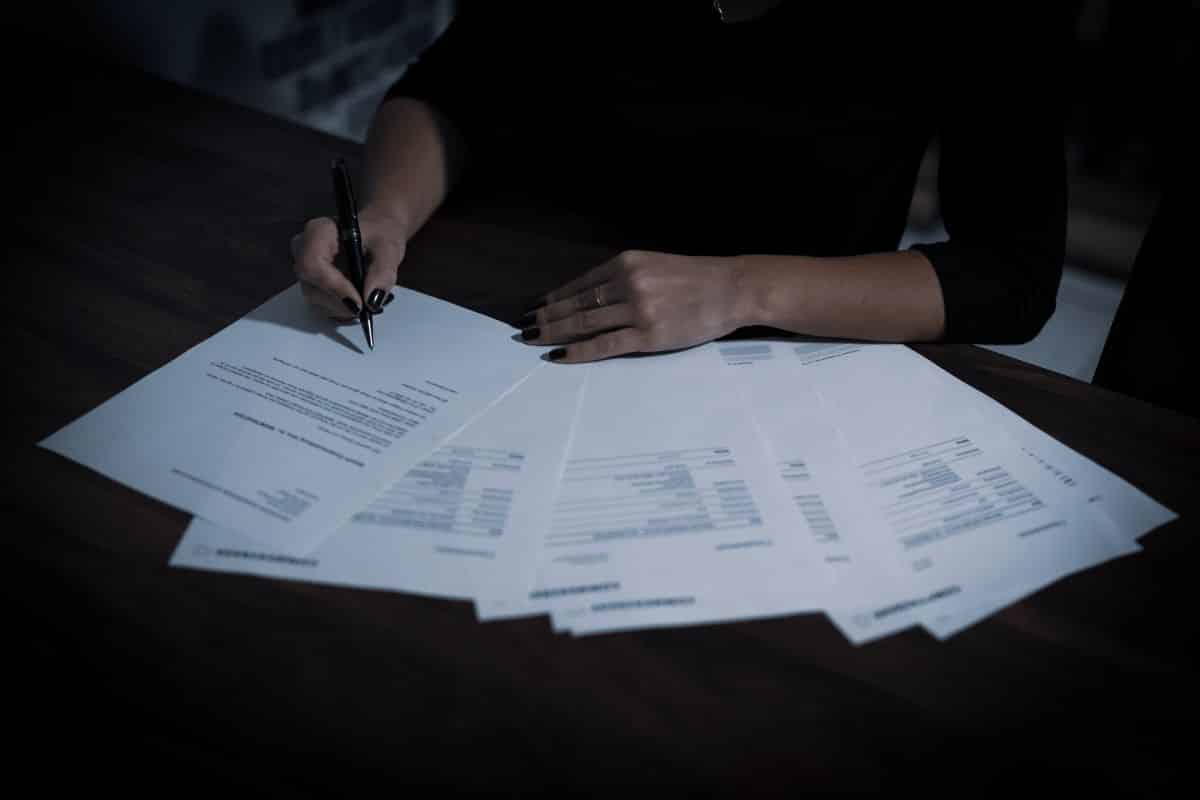
Deductions for holding vacant land have now been limited. The new rules apply to costs incurred on or after 1 July 2019, even if the land was held before that date.
Corporate tax entities, superannuation plans (other than self-managed superannuation funds), managed investment trusts, public unit trusts, and unit trusts or partnerships with all members being the aforementioned entity types can continue to claim deductions for expenses incurred for holding costs of vacant land.
There are some entities and circumstances where deductions for vacant land can still be claimed. For example, where the entity holding the land is a company, where you use the land in carrying on a business, or exceptional circumstances apply.
Expenses of holding land remain deductible if incurred in carrying on a business such as farming or gaining or producing assessable income.
The rules can be complex and require you to determine whether you are holding vacant land, whether it satisfies the various requirements or if exceptional circumstances apply.
The ATO has produced a flowchart to determine if deductions for expenses related to vacant land are limited.
Residential property and non-residents
Suppose you are a foreign resident for tax purposes when you dispose of your residential property in Australia. In that case, you will not qualify for the CGT main residence exemption unless you satisfy the life events test.
Gains or losses from cryptocurrencies
Almost one in five Australians invest in cryptocurrencies. If you are or have been involved in acquiring or disposing of cryptocurrencies in the past, you need to be aware of the tax consequences.
Any capital gain on the sale of the cryptocurrency may be subject to taxation. Exchanging one cryptocurrency for another, as well as chain splits, staking incentives, and airdrops, all have restrictions.
Because the ATO now compares transaction data from digital exchanges, it’s more crucial than ever to record cryptocurrency gains and losses appropriately.
Different rules apply if you use cryptocurrency in business, such as running your start-up or trading large volumes of cryptocurrency.
Capital gains tax planning
You should time the sale of appreciating assets carefully to avoid triggering a capital gain. It’s crucial to understand that CGT is triggered when you engage into a contract to sell a CGT asset, not when it settles.
This is especially essential when the contract’s entry and settlement fall around the end of the fiscal year. In certain cases, deferring the sale of the CGT asset to the following year, when other relief, such as a capital loss liquidated on another asset, may be available, may be desirable from a cash flow viewpoint.
You should also ensure that an eligible asset is retained for the 12-month holding period required under the CGT discount. The CGT discount is generally not available to foreign residents or temporary resident individuals.
Keep proper records for all of your investments and ensure that you keep them for at least five years after a capital gains tax event occurs.
Read the ATO’s guidance on capital gains tax.
Foreign investments
If you live in Australia and have assets in another country, you must report any capital gains or losses on such assets in your tax return. You may also have to report income from foreign investments on your tax return.
Even if your money is stored offshore for you, you can receive it. If you receive foreign income or make taxable gains in Australia and pay foreign tax on that income, you may be eligible for an Australian foreign income tax offset.
Be aware that the ATO has information-sharing agreements with revenue authorities in many foreign countries, and as a result, data on any of your foreign interests and income is likely to be received.
Exchange-traded funds
Exchange-traded funds (ETFs) are an increasingly popular investment product, but calculating the tax on them can be complicated. Because ETFs are classified as trusts, not ordinary company shares, they fall under the Attribution Managed Investment Trust (AMIT) rules.
This means you’ll have to record all of your distributions and capital gains separately on your tax return.
While many investors will receive a member annual statement with all of the relevant information, these reports are not required. However, you must ensure that ETF amounts are accurately reported on your tax return, so double-check to see whether all of the relevant facts are included and contact the fund or registration if they aren’t.
Investment products
Towards the end of the fiscal year, there is usually an increase in the promotion of tax-efficient investment products.
Check to see if a Product Ruling or a Taxpayer Alert has been issued by the ATO.
A product ruling gives the ATO confidence about the tax effects of an arrangement if it is carried out according to the ruling’s instructions. It is not, however, a sanction or guarantee of a product’s or investment’s tax efficiency.
The ATO publishes taxpayer alerts when it detects higher-risk arrangements or concerns.
You should make an opinion on a product’s commercial and financial viability.
Consider whether the predicted returns are reasonable, the management’s “track record,” the level of costs in comparison to similar products, and how the investment fits into an existing portfolio.
If you’re thinking about making such an investment, get some independent advice first.
Tax tips for small business
Throughout the year, small business owners frequently engage with the ATO and their tax agent. Tax season gives you an extra chance to make sure your tax affairs are in order, get crucial tax advice, and see if you can improve your tax situation.
Professional tax guidance is recommended, especially in locations where more complex tax difficulties develop.
Refinanced debt, losses, restructures, capital gains tax, personal services income, trust declarations and distributions, and private company loans all fall under this category.
Speak with a CPA Australia-registered tax agent if you need guidance, have made mistakes, or need to correct your business records.
The basics
Getting the basics right has never been more vital — solid record keeping, substantiation, correct account codes, appropriately accounting for private use, and declaring all cash transactions are all critical to ensuring that your tax affairs are in order for yourself, your tax agent, and the ATO.
Small firms must guarantee that their bookkeeping and inventory are accurate and current. Business owners are responsible for accurately reporting their revenue, claiming their costs, and keeping accurate records.
When keeping your records, make sure to:
- record cash income and expenses
- account for personal drawings and use of company money or assets
- record goods for your use
- separate private expenses from business expenses
- keep valid tax invoices for creditable acquisitions when registered for GST
- keep adequate stock records
- keep adequate records to substantiate motor vehicle claims.
The ATO is becoming more data-driven, and business owners are contacting their income and expense claims more frequently.
The ATO has enhanced resources to cope with the cash economy and will check for differences in returns when compared to pre-fill data or business benchmarks.
To correct any inaccuracies or mistakes, contact the ATO. You can usually expect a decrease in the administrative penalties and interest costs that would otherwise apply if you make a voluntary disclosure.
When filing your tax return, your tax advisor is expected to exercise reasonable care, which means they may ask you comprehensive questions about your cash flow, business performance, personal use of assets, and records.
JobKeeper
JobKeeper payments are assessable as ordinary income. However, you can claim deductions for the wage payments you made to employees, including amounts subsidised by JobKeeper.
Ensure that your reporting and documentation are correct. You must keep this information for five years after the payment was made.
Cash flow boost
Verify that the cash flow boost amounts were received accurately. No tax is due since cash flow boost payments are classified as non-assessable, non-exempt income.
The increase in cash flow is not subject to GST, and you can still claim a deduction for PAYG withholding.
Assume you distribute the business’s cash flow boost to another entity (for example, making a trust distribution or paying a dividend to shareholders). In that instance, the beneficiary may face tax repercussions.
Covid-19 and disaster payments
During the year, many firms got COVID-19 or other disaster-related government assistance.
Government payments to help a business stay in business are assessable unless there is a particular exception. This can be in the form of a one-time payment or a series of installments.
The Australian Taxation Office (ATO) has released information on the taxation of a variety of federal, state, territory, and municipal government aid programs. You should also look into how disaster assistance payments are taxed.
The same rules for deductibility apply if you use an aid payment to purchase products for your firm. The fact that money from a relief fund was utilized to purchase an item has no bearing on the item’s deductibility.
Personal services income rules
Personal services income (PSI) is money earned mostly through your own skills or efforts. Medical professions, construction workers, financial professionals, and IT consultants are all common examples.
The PSI rules are designed to prevent you from reducing or deferring income tax by using corporations, partnerships, or trusts to channel income earned from your services.
Check to find out if the PSI guidelines apply to you or if you’re in the personal services industry (PSB). If more than one person is earning PSI through a business, partnership, or trust, you’ll need to go through the steps for each person separately.
Once you’ve determined which PSI regulations apply, you’ll need to attribute PSI to each individual who generated the revenue and double-check that you’re withholding correctly.
The PSI guidelines are frequently broken by businesses. This is understandable given their complexity and the fact that their application varies from contract to contract.
Crowdfunding
The tax implications of crowdfunding differ based on the type of the transaction, your role (promoter, intermediary, or contributor), and the conditions.
The tax regulations that apply to traditional investment and financial activity (such as buying goods and services, buying stocks, and lending money) also apply to investment and the financial activity performed through crowdsourcing.
Deductions
Optimise depreciation deductions
You can depreciate your assets in a variety of ways. As part of the COVID-19 economic stimulus packages, the federal government established and has extended the instant asset write-off, temporary full expensing, and boosting business investment policies.
The Australian Taxation Office (ATO) provides information on how the government’s various tax depreciation incentives interact.
The simplified depreciation standards, such as the rapid asset write-off and the general small business pool, are used by many businesses. You deduct the small business pool amount at the end of the income years ending between October 6, 2020, and June 30, 2022, if you use temporary full expensing. The methods are explored in greater depth further down.
Not all assets are eligible for the instant asset write-off and temporary full expensing deduction procedures. If the asset is qualified for accelerated depreciation, it will be assigned to the general small business pool and depreciated at the appropriate rate.
The asset’s termination value must be deducted from the pool if a balancing adjustment occurs throughout the year.
For the 2020–21 tax year, if you buy a car for your business, the depreciation amount is limited to the business portion of the $59,136 car limit. Any additional depreciation restrictions do not apply to the excess cost of the car.
Instant asset write-off
The instant asset write-off is available for:
- assets first used or installed ready for use from 12 March 2020 until 30 June 2021 and purchased by 31 December 2020
- assets costing up to $150,000 (up from $30,000)
- businesses with an aggregated turnover of less than $500 million (up from $50 million).
The instant asset write-off can be used for multiple assets if the cost of each asset is less than the relevant threshold and new and second-hand assets.
Temporary full expensing
Businesses with an aggregated turnover of less than $5 billion are entitled to deduct the business portion of the cost of new depreciating assets that are eligible (not excluded assets).
Between 7.30 pm AEDT on 6 October 2020 and 30 June 2022, the qualified assets must be first possessed and first used or installed ready for use for a taxable purpose.
If the expenditures are incurred between 7.30 pm AEDT on 6 October 2020 and 30 June 2022, businesses can deduct the business portion of the cost of modifications to eligible depreciating assets (including assets acquired before 7.30 pm AEDT on 6 October 2020 that would otherwise be eligible assets).
If you don’t use the simplified depreciation standards, you can opt out of temporary full expensing for an income year on an asset-by-asset basis.
You apply the temporary full expensing standards with minor modifications if you are a small business that chooses to adopt the simplified depreciation rules. Deduct the remainder of your small business pool at the end of an income year that ends between October 6, 2020, and June 30, 2022.
Employee bonuses
If you offer incentives to employees and wish to include them in the 2020–21 budget, make sure they are quantified and documented in a fully authorized resolution (e.g. in board minutes).
This must be done before the end of the year to avoid a deduction for employee bonuses that are not paid or credited until the following year.
Trading stock
Because the value of their trading stock does not fluctuate by more than $5,000 each year, many small businesses employ the simplified trading stock regulations. Last year, however, COVID-19 had an impact on sales. As a result, inventory levels in certain organizations have decreased dramatically, and the market selling value or replacement value basis may be more tax-effective.
If COVID-19 has reduced the market value of trading stock below its cost, such as for outmoded stock, your closing stock may be valued at a lower amount than its cost, resulting in an allowed deduction.
Write off bad debts
When certain requirements are met, businesses can claim a deduction for bad debts. The debtor cannot be located, the debtor is in liquidation or receivership, there are insufficient finances or assets to satisfy the debt, or there is little or no chance of the debt being recovered, to name a few examples.
A deduction will be granted only if the debt is still owed when it is written off. There will be no deduction if the debt is forgiven or compromised before it is written off as bad in the books.
When the creditor is a corporation or a trust, some additional requirements must be completed. Furthermore, private corporations with debts owed to shareholders or a shareholder’s associate are subject to particular laws.
Tax payable

Company tax rate
Most companies with an aggregated annual turnover of less than $50 million will pay tax at 26 per cent in 2020–21. However, some companies with a turnover below $50 million will continue to pay tax at 30 per cent, especially companies that earn nearly all their income from passive investments, such as rental income or interest income.
These differential rates create several complexities for companies.
To qualify for the lower (base rate entity) tax rate:
- a company must have an aggregated turnover of less than $50 million, where aggregated turnover is the sum of the company’s ordinary income and the ordinary income of any connected affiliate or entity, and
- no more than 80 per cent of their assessable income is base rate entity passive income.
The full company tax rate of 30 per cent applies to all companies that are not eligible for the lower company tax rate.
In line with the changes to company tax rates, there have also been changes to the franking rules, which affects the allocation of franking credits.
Loss carry-back tax offset
Eligible companies with a taxable loss may be able to claim the loss carry-back tax offset.
In particular, eligible companies that find themselves in a taxable loss position due to the instant asset write off or temporary full expensing rules could use the loss carry-back tax offset instead of carrying forward the losses to future years.
The offset effectively represents the tax an eligible company would save if it could deduct the loss in the earlier year using the loss year tax rate.
Ever think you’re paying too much tax? Tax Warehouse, Australian individual tax return specialists are experts when it comes to tax minimisation on your personal tax return. Contact us to get your personal tax return going on via www.taxwarehouse.com.au, 0407 418 209 or email us on [email protected].
As it is a refundable tax offset, it may result in a cash refund, a reduced tax liability or a reduction of a debt owing to the ATO. In addition, the eligible company does not need to amend the earlier income years to claim the offset.
The tax offset available is limited to your franking account surplus on the last day of the income year for which you claim it. The ATO will be checking franking accounts to ensure the offset is claimed correctly.
Losses
Businesses may find themselves in a taxable loss position or seek to use prior-year losses when their business performance changes.
Different loss rules apply depending on the business structure. For example, partnerships distribute the loss proportionately to each partner, while trust losses can’t be distributed to beneficiaries.
Companies are subject to rules such as same majority ownership and control, same business test or similar business test.
We recommend seeking professional advice on issues like the loss tests, loss carry-back tax offset, the effect of capital injections on continuity of ownership tests and unrealised losses from reductions in asset values.
CGT concessions
In addition to the more widely available CGT concessions, small businesses can access the following specific concessions:
- 15 year-exemption
- 50 per cent active asset reduction
- retirement exemption
- rollover
- restructure rollover.
You can apply as many concessions as you’re entitled to until the capital gain is reduced to nil. There are rules about the order in which you apply the concessions, any current year or prior year capital losses, and the CGT discount.
The rules are complex, and getting it wrong can be costly, so we recommend seeking advice before restructuring or disposing assets and ensuring your business structure is designed to take advantage of the available concessions.
PAYG instalment indexation suspended
The government suspended the indexation of PAYG and GST instalment amounts for small businesses in 2020–21, and the ATO allowed taxpayers to vary their quarterly instalments without penalty.
Some businesses that reduce their instalment amounts during the year may receive a larger than the expected tax bill. The ATO offers a range of payment plans to assist.
Private use of company money or assets
There are rules around taking money out of your business or using its money or assets for yourself and your family. This is often done by:
- payments of salary, wages or directors’ fees – withholding, superannuation and payroll reporting requirements for the company
- provision of fringe benefits – the company pays fringe benefits tax
- repayments of a loan to the company
- dividends – a profit distribution that may include franking credits
- company loans.
The private use of company money or assets is a focus area for the ATO, and the consequences of getting it wrong can be costly.
Division 7A
A private company’s payment or another benefit to a shareholder or their associate can be treated as a dividend for income tax purposes under Division 7A.
The income tax laws may treat the following as an unfranked deemed dividend for a taxpayer unless an exemption applies:
- a payment or a loan by a private company to a shareholder or an associate (like a family member)
- the forgiveness of a shareholder’s or associate’s debt
- the use of a company asset by a shareholder or their associate, or
- the transfer of a company asset to a shareholder or their associate.
The most common exemption is to enter into a written loan agreement requiring minimum interest and principal repayments over a specified loan term. This may be seven or 25 years, depending on whether the loan is secured.
There are various things a private company can do before its 2020–21 income tax return needs to be lodged to minimise the risk of a shareholder or an associate deriving a deemed dividend.
Division 7A also applies to certain benefits provided to shareholders or their associates from trusts where a private company has a present unpaid entitlement (UPE) to the trust’s profits.
Trusts
Prepare trust resolutions by 30 June
Trustees of discretionary trusts are always required to prepare and document resolutions on how trust income should be distributed to beneficiaries for the 2020–21 financial year by 30 June.
Suppose a proper resolution is not executed by 30 June. In that case, any default beneficiaries under the deed will become presently entitled to trust income and subject to tax (even where they do not receive any cash distribution).
Alternatively, the trustee will be assessed at the highest marginal tax rate on any taxable income derived but not distributed by the trust.
A trustee must show how an effective resolution was made through minutes, file notes or an exchange of correspondence documented before year-end. However, the trust’s accounts do not need to be prepared by 30 June.
As a corporate trustee may need time to notify its directors that a meeting must be convened to pass and record a resolution, such a notice should be sent out well before the 30 June deadline.
Streaming capital gains and franked dividends
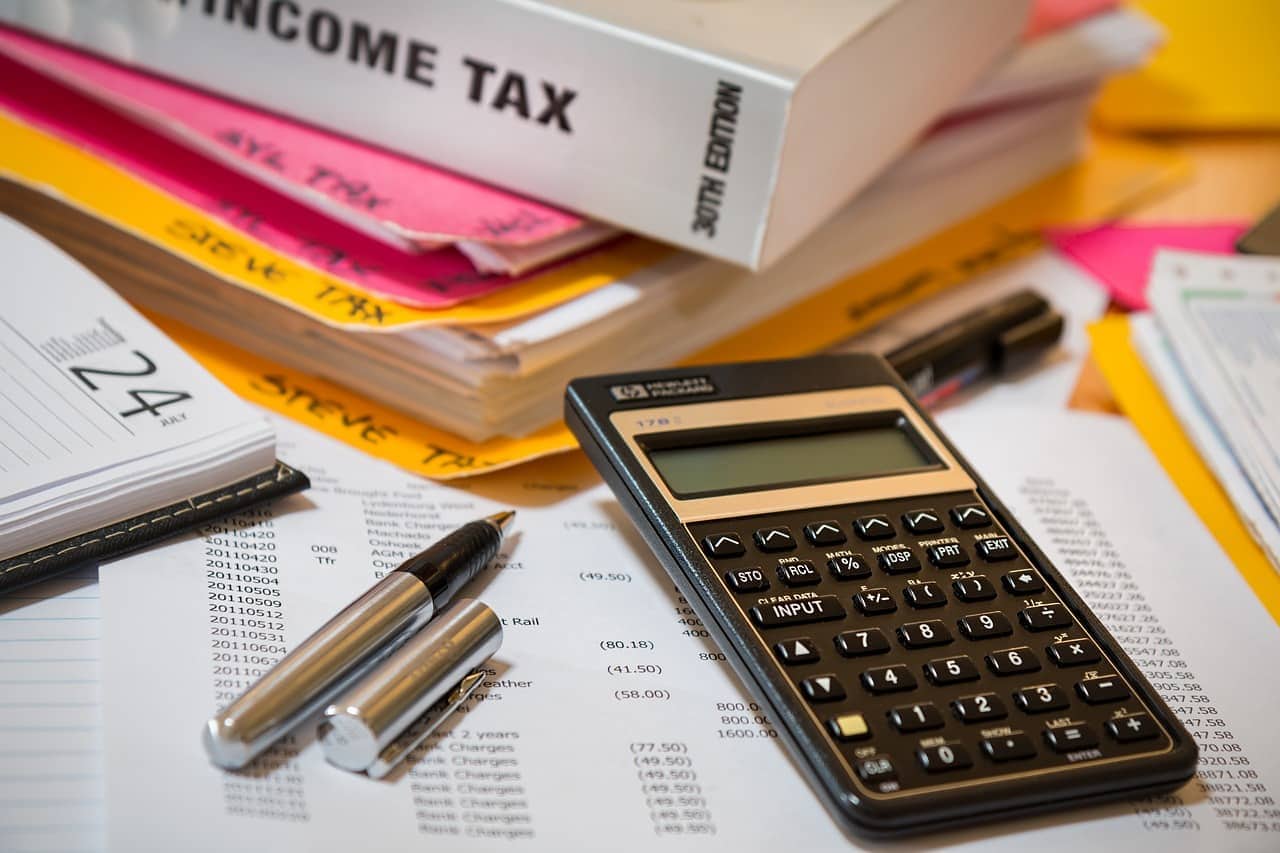
The procedures for streaming capital gains and franked dividends to multiple beneficiaries are complicated, but in principle, trustees of discretionary trusts can do so if the trust deed authorizes them to declare a beneficiary “specifically entitled” to those amounts.
The beneficiary receives or is entitled to receive an amount equivalent to the net financial benefit of that gain or dividend if the trustee documents this determination by June 30.
Prevent deemed dividends
If the same family group controls the trustee and the firm, an overdue distribution owing by a trust to a connected private company beneficiary that occurs on or after July 1, 2016, will be viewed as a loan.
The related trust may be judged to have received a presumed dividend for the unpaid trust payout in 2020–21 in these conditions.
However, if the unpaid distribution is paid out or a compliant loan agreement is entered into before the company’s 2020–21 income tax return is due, a presumed dividend may be avoided.
If the money is retained in an appropriate sub-trust arrangement for the sole benefit of the private firm and other conditions are met, there will be no presumed dividend.
Reimbursement agreements
Suppose a beneficiary’s entitlement arises out of a reimbursement agreement. In that case, the net income that would otherwise have been assessed to the beneficiary (or trustee on their behalf) is instead assessed at the top marginal tax rate.
The exception is where the agreement is part of an ordinary family or commercial dealing. The beneficiary is under a legal disability (e.g. a minor), so make sure that any reimbursement agreements satisfy legal requirements.
Additional tips
Single Touch Payroll
Employers need to make a finalisation declaration by 14 July 2021 so that employees can access their tax-ready income statements.
Before finalising, ensure the STP information is correct and apply for a deferral if you need more time.
Superannuation guarantee
Ensure that employee superannuation guarantee payments are current. Employers can deduct contributions made on their employees’ behalf in the financial year in which the nominated super funds receive them by June 30.
Notify the ATO of any missing payments and get them corrected. You must lodge a superannuation guarantee charge (SGC) statement and pay the SGC to the ATO if you do not pay an employee’s super guarantee on time and to the correct fund.
Overpayments are subject to the ATO’s limited discretion, which it can apply in certain instances.
There are significant administrative expenditures, fines, and penalties associated with the SGC, which are not tax deductible. As a result, it’s critical to make sure you’re paying superannuation guarantee on time throughout the year.
The taxable payments reporting system
Does your business earn income from building and construction, cleaning, courier, road freight, IT, security, investigation or surveillance services? If so, you may need to lodge a taxable payments annual report by 30 August 2021 to report payments made to contractors.
The details you need to report are generally contained in the contractors’ invoices and include ABN, name, address and total amounts paid for the financial year.
GST adjustments
Your tax agent will frequently reconcile your GST accounts when you file a tax return for your business. This can reveal misclassified transactions or unclaimed credits that must be resolved.
Many GST and fuel tax credit issues can be addressed in your next BAS. If you are unable to remedy your error in your next BAS, you must file a revision.
It’s also a good time to double-check that your accounting software is tracking your GST transactions appropriately.
Worksheets are available from the ATO to help calculate GST adjustments for sales, purchases, bad debts, creditable purpose, and adjustments summary.
Businesses in financial distress
COVID-19 has left many businesses facing cash flow difficulties or severe financial distress. Therefore, it’s important to create a budget and seek to improve the financial position of your business.
There are tax obligations to consider when deregistering a company, and the ATO provides information for businesses in financial difficulty.
Individuals facing serious financial hardship can apply for release from their tax debts.
If you think your business is in financial difficulty, getting proper accounting and legal advice as early as possible is critical.
Primary production
Farm management deposits (FMDS)
One of the best tax planning measures available to primary producers is utilising the farm management deposits scheme (FMDs). They are an effective business and cash flow planning tool.
Primary producers can deposit up to $800,000 in an FMD account and have early access to their FMD account during times of drought. They may be able to offset the interest costs on primary production business debt.
Income averaging
Tax averaging enables primary producers to even out their income and tax payable over a maximum of five years to allow for good and bad years.
This ensures that farmers don’t pay more tax over time than taxpayers on comparable but steady incomes.
Other primary producer tax concessions
Other tax concessions you may be entitled to as a primary producer include:
- the uncapped immediate write-off for capital expenditure on water facilities and fencing assets
- the deduction for the full cost of a fodder storage asset if the expense was incurred or it was first used or installed ready for use on or after 19 August 2018
- the outright deduction for capital expenditure for land care operations and carbon sink forests
- the accelerated write-off for horticultural plants and grapevines.
Finding a tax agent
You can cut your own hair, but going to a professional will give you a better result.
Completing your tax return is the same way. You may be sure you’re satisfying your tax duties and collecting the maximum refund you’re entitled to if you see a CPA-registered tax agent.
Because taxes can be confusing, it’s definitely worth the cost.
The most typical response to tax questions is “It depends,” which reflects the complexities of the Australian tax system. Tax professionals manage this minefield on your behalf, alleviating the stress of tax season.
Using a tax agent gives you peace of mind, gives you access to professional tax counsel, gives you more time to file your return, and makes tax preparation easier. They can also help you determine the tax implications of your future operations and set up appropriate record-keeping processes to maximize your claims. The expense of consulting a tax advisor is also deductible.
For a simple tax return, most tax agents don’t charge much. Throughout the year, most small business owners will meet with a tax advisor to help them handle their tax concerns.
Verify if your tax preparer is a member of the Tax Practitioners Board.
It’s also a good idea if they belong to a professional accounting organization like CPA Australia. You’ll know they’re following professional and ethical guidelines this way.
It’s critical to establish a long-term and trusting connection with your tax advisor, just as it is with any other relationship. This ensures that they have a thorough understanding of you, your company, and your finances, allowing you to properly manage your taxes.
Tax agents are required to keep up with the newest tax developments and legislative changes. Regulatory regulations also bind them to ensure that the service you obtain is of high quality and legal.
Every tax agent, for example, is required by law to exercise reasonable caution. Checking your tax history, making sure you have paperwork such as receipts, and asking questions about your income, expenses, and assets are all part of this process.
Things you should watch out for include agents who:
- promise large refunds
- charge a percentage of your refund as a fee
- spend very little time with you or on your tax return
- don’t ask for receipts or documentation
- don’t ask questions or enter information that you can’t substantiate
- ask you to sign blank or incomplete returns or blank voluntary disclosure forms, or
- ask to lodge your tax return through myTax.
You should be careful about who you ask to prepare your return and make sure that you check the tax return in detail before signing.
Even if you use a tax agent, the responsibility is on you to ensure that your tax affairs are reported correctly and that you’re able to prove your claims if the ATO asks any questions.
Tax scams and identity theft
Tax-related frauds, fraud attempts, fraudulent emails, and SMS schemes targeting Australians have increased significantly.
To commit an identity crime, thieves simply need basic information like a person’s name, date of birth, address, myGov details, or tax filing number (TFN).
It can take a long time to recover your identity if someone steals it. As a result, finding a job, getting a loan, renting a house, or applying for government services or benefits may be challenging.
Do not respond if you are unsure whether an ATO engagement is genuine. If you receive an SMS or email purporting to be from the ATO, verify that it is legitimate by contacting the ATO.
To protect against scams and identity theft, the ATO encourages individuals to:
- run the latest software updates to ensure operating systems security is current
- update antivirus software
- always exercise caution when clicking on links and providing personal identifying information
- never share personal information on social media, such as your TFN, myGov or bank account details.
- avoid accessing online government services via a hyperlink in an email or SMS – only via an independent search
- always access the ATO’s online services directly via ato.gov.au or my.gov.au or the ATO app
- call the ATO on an independently sourced number to verify an interaction if in doubt
- don’t click on a link; open an attachment or download a file if in doubt.
Ensure the security of your digital identity, such as my Ovid. Your digital identity is personal to you and should not be shared because it will give others access to your information in areas like tax and health.
If you believe your TFN or ABN has been stolen, abused, or compromised, call the ATO’s Client Identity Support Centre at 1800 467 033 Monday through Friday between 8 a.m. and 6 p.m. They can look into your account and put additional safeguards in place.
If you believe someone has accessed your myGov account without your permission, including your associated ATO services, call the ATO at 13 28 61 between 8 a.m. and 6 p.m., Monday through Friday.
If you believe someone has accessed your personal information in myGovID without your permission, call the ATO at 1300 287 539 (option 2) between 8 a.m. and 6 p.m. AEST Monday to Friday.
Do you need help with your individual tax return? Tax Warehouse is a trusted individual tax return preparation company in Australia. We perform cheap and quick tax returns for individuals. You can give us a call on 0407 418 209 or email us on [email protected].


